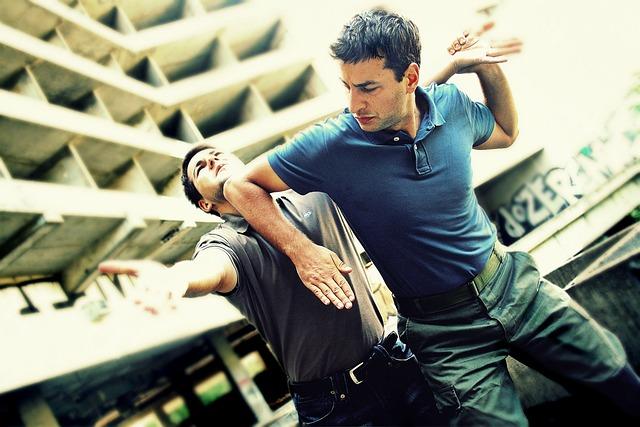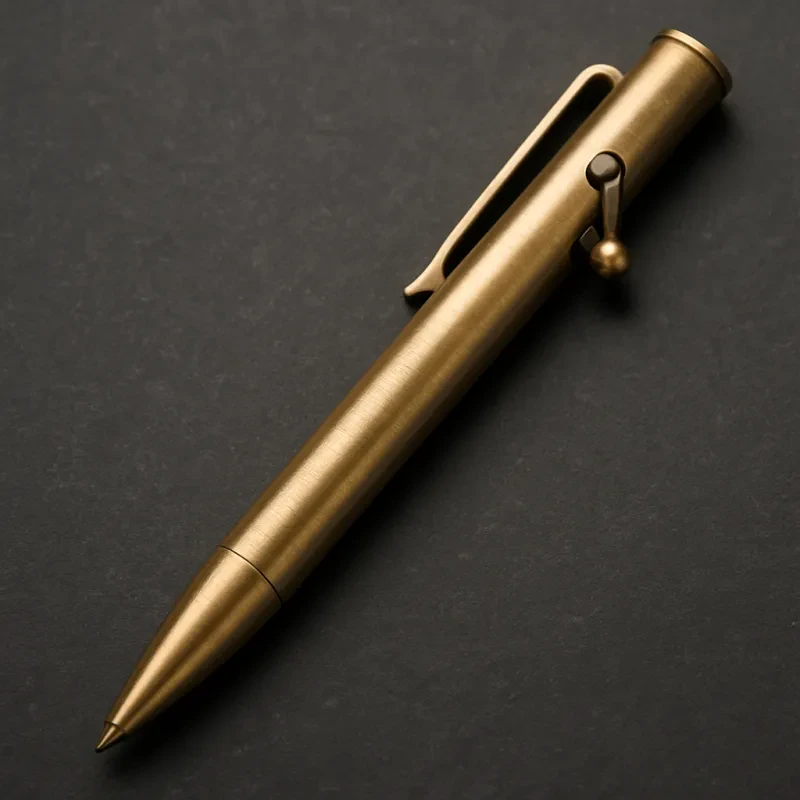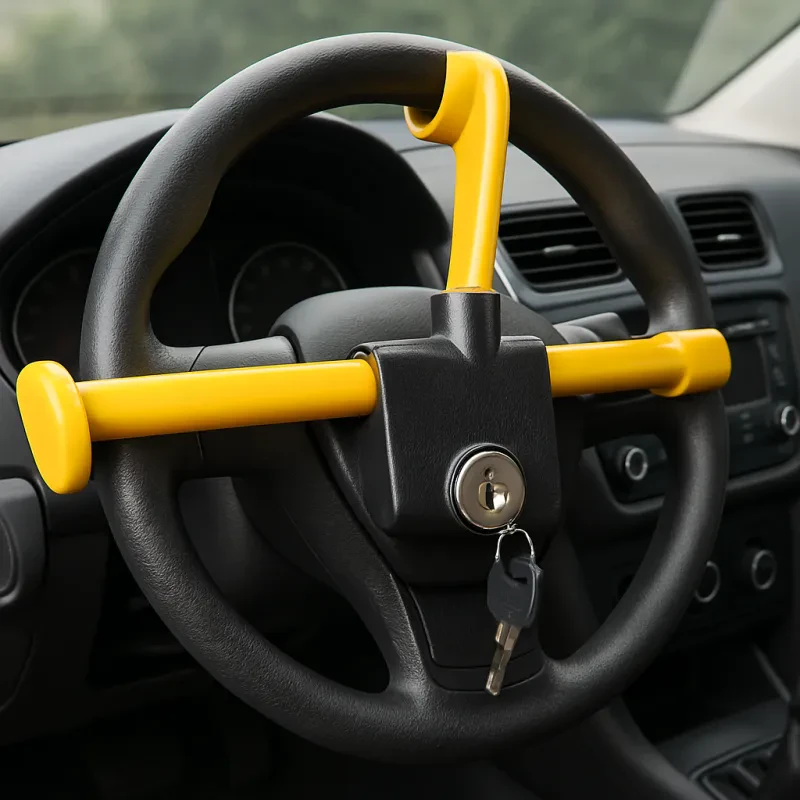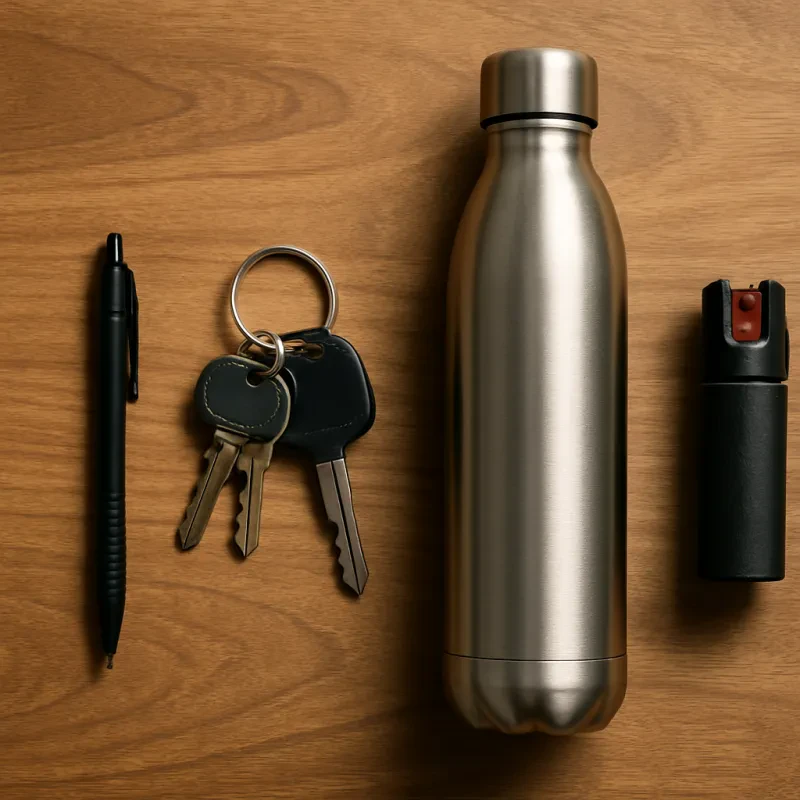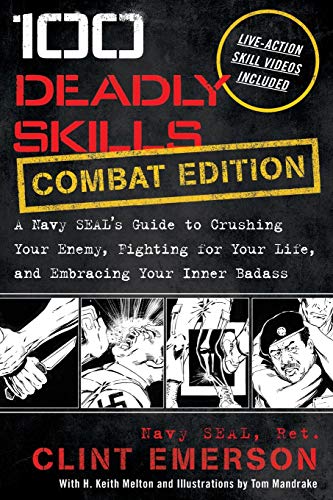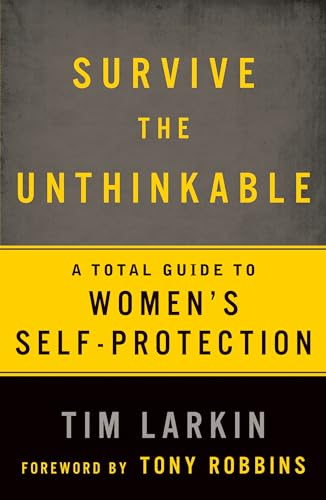Essential Tips for Self-Defense in Close Quarters
Understanding Close Quarters Combat
Close Quarters Combat (CQC) refers to situations where individuals engage in physical confrontations within confined spaces. These environments, often characterized by limited movement options and close proximity to an aggressor, necessitate a distinct approach to self-defense. Unlike traditional self-defense techniques that might be practiced in open spaces, CQC requires adaptations to account for the unique challenges posed by confined areas.
One of the primary distinctions in CQC is the necessity for quick thinking and the ability to react rapidly. In close quarters, the margin for error is significantly reduced. The proximity to the assailant demands immediate and decisive action to neutralize threats effectively. This immediacy underscores the importance of mental preparedness and the capacity to make swift decisions under pressure.
Body awareness is another critical component of successful CQC. Understanding one's spatial orientation and movement capabilities within a restricted area can significantly influence the outcome of a confrontation. Effective body mechanics, such as maintaining balance, leveraging force efficiently, and optimizing one's stance, are essential skills. Practitioners must be acutely aware of their surroundings to utilize available objects or structures as defensive tools or barriers.
Traditional self-defense techniques often emphasize creating distance between oneself and the attacker. However, in close quarters, this strategy may not always be feasible. Therefore, CQC training often focuses on techniques that maximize the defender's ability to control or incapacitate the assailant within arm's reach. This may include grappling, joint locks, and strikes aimed at vulnerable areas to quickly subdue the opponent.
The importance of adaptability cannot be overstated in CQC scenarios. Each environment presents unique challenges, and the ability to adjust tactics accordingly is paramount. Whether in a narrow hallway, a crowded room, or an enclosed vehicle, the principles of CQC remain consistent: maintain situational awareness, react swiftly, and utilize efficient, targeted techniques to ensure personal safety.
Mental Preparedness
Mental preparedness is a cornerstone of effective self-defense in close quarters. The ability to remain calm and composed during a confrontation can significantly impact the outcome. To achieve this state of mental readiness, it is essential to develop strategies that enhance situational awareness and stress management.
One effective technique for maintaining composure is controlled breathing. When faced with a threatening situation, the body's natural response is to enter a state of heightened stress, which can impair judgment and reaction time. Practicing controlled breathing can help mitigate this response. By focusing on slow, deep breaths, individuals can activate the parasympathetic nervous system, which promotes a state of calm and helps reduce anxiety.
Visualization is another powerful tool for mental preparedness. This involves mentally rehearsing potential scenarios that one may encounter in close quarters combat. By visualizing these situations in detail, individuals can prepare their minds for a variety of outcomes and responses. This mental rehearsal helps create a sense of familiarity and reduces the shock factor if such an event were to occur in real life.
Maintaining situational awareness is also crucial. This means being constantly aware of one's surroundings and recognizing potential threats before they escalate. Techniques to enhance situational awareness include scanning the environment, identifying exit routes, and noting the behavior of others. This heightened awareness can provide a critical advantage in a confrontation, allowing for quicker and more effective responses.
Managing stress is equally important. Chronic stress can impair cognitive function and physical performance, both of which are vital in a self-defense situation. Techniques such as mindfulness meditation and progressive muscle relaxation can be beneficial. These practices help reduce overall stress levels and improve the ability to stay focused and calm under pressure.
Incorporating these mental preparedness techniques into regular training can significantly enhance one's ability to defend themselves effectively in close quarters. By staying calm, maintaining situational awareness, and managing stress, individuals can improve their chances of a favorable outcome in a confrontation.
Posture and Stance
In close quarters self-defense, maintaining a strong and balanced posture is essential for both stability and protection. A proper stance serves as the foundation for effective defensive techniques, enabling individuals to respond swiftly and decisively to threats. The key to a robust defensive posture lies in positioning oneself in a way that minimizes exposure to attacks while remaining ready to counter or escape as needed.
One of the fundamental stances in self-defense is the "neutral stance." In this position, the feet are shoulder-width apart, with the knees slightly bent. This posture ensures balance and mobility, allowing for quick adjustments in response to an attack. The body should be relaxed but alert, with the weight evenly distributed across both feet. Keeping the hands up and near the face is also crucial, as it protects vital areas and prepares for potential strikes.
Another important stance is the "bladed stance," where the body is turned at a slight angle, presenting a smaller target to the opponent. In this position, one foot is placed slightly ahead of the other, with the lead foot pointing towards the attacker. This posture not only reduces the likelihood of being hit but also enhances the ability to deliver powerful counterattacks. The bladed stance is particularly effective in close quarters, where space is limited, and swift movements are necessary.
Proper positioning is equally important in close quarters self-defense. Individuals should strive to maintain an advantageous position relative to their attacker, ensuring they are not cornered or trapped. By constantly adjusting one's position, it becomes easier to evade attacks and create opportunities for countering or escaping. Awareness of the environment, including potential obstacles and exits, plays a critical role in maintaining a tactical advantage.
In summary, adopting a strong and balanced posture, utilizing effective defensive stances, and strategically positioning oneself are crucial components of self-defense in close quarters. These elements work together to enhance stability, protect vital areas, and enable quick, decisive actions in response to threats.
Effective Striking Techniques
In close quarters self-defense, employing effective striking techniques is paramount to neutralizing a threat swiftly and efficiently. Various strikes can be utilized to target vulnerable areas on an attacker’s body, thereby maximizing the impact of each blow. Among the most effective strikes are punches, elbow strikes, knee strikes, and headbutts, each serving a specific purpose in self-defense scenarios.
Punches are fundamental in close quarters combat. The key is to aim for sensitive areas such as the eyes, nose, and throat. A well-placed punch to the nose can cause significant pain and disorientation, creating an opportunity to escape or follow up with additional strikes. The throat is another critical target; a precise strike here can impede the attacker’s ability to breathe, temporarily incapacitating them.
Elbow strikes are particularly effective in tight spaces where there may not be enough room to throw a full punch. The elbows are bony and powerful, capable of delivering devastating blows to the face and head. Striking the side of the head or the jaw with an elbow can be particularly effective, often leading to immediate disorientation or knockdown.
Knee strikes are another powerful tool in close quarters self-defense. Targeting the groin with a knee strike can deliver excruciating pain and incapacitation. Additionally, knees can be used to strike the midsection or thighs, causing debilitating pain and limiting the attacker’s mobility.
Headbutts, though risky, can be a last-resort technique when other strikes are not possible. A headbutt to the nose or forehead can cause significant pain and confusion. It is crucial, however, to ensure the striker’s own safety by targeting soft tissue areas and avoiding hard skull-to-skull contact.
Overall, the effectiveness of these striking techniques hinges on speed and precision. In close quarters, there is little room for error; each strike must be deliberate and accurately placed to maximize its effectiveness. By targeting the attacker’s vulnerable areas with speed and precision, one can significantly enhance their chances of successfully defending themselves in a close quarters situation.
Using Everyday Objects as Weapons
In close quarters self-defense scenarios, the immediate environment can often provide an array of potential tools to protect oneself. Everyday objects, typically overlooked, can become improvised weapons in the hands of someone trained to use them effectively. Recognizing and utilizing these items can be the difference between vulnerability and empowerment.
Keys, for instance, are a common item that can be easily transformed into a defensive tool. When held between the fingers, keys can be employed to jab at sensitive areas of an assailant, such as the eyes or throat. This not only causes pain but also creates a crucial window for escape. Pens and pencils, often found in pockets or bags, can serve a similar purpose. With a sharp point and a sturdy body, these writing instruments can be used to strike and deter an attacker.
Bags and purses, frequently carried, can also be repurposed for self-defense. A bag swung with force can disrupt an attacker's balance or even cause injury. Additionally, bags with long straps can be used to fend off an aggressor by keeping them at a distance. In more dire situations, a tightly rolled magazine or a book can become an effective blunt object, capable of delivering impactful blows.
Moreover, belts, scarves, and even clothing can be utilized in defense. A belt, when wrapped around the hand, can enhance the impact of a punch, or it can be used to choke or restrain an attacker. Scarves can be similarly employed to obstruct breathing or vision, providing a tactical advantage. Clothing, such as jackets, can shield against strikes or be used to entangle an opponent.
Ultimately, the key to using everyday objects as weapons lies in quick thinking and adaptability. By recognizing the potential in ordinary items and understanding basic self-defense techniques, individuals can better protect themselves in close quarters confrontations. This approach not only leverages available resources but also empowers individuals to act decisively under pressure.
Escaping Holds and Grabs
In the realm of self-defense, mastering the techniques to escape holds and grabs is crucial. These scenarios are common in close quarters, and understanding how to respond effectively can make a significant difference. Whether facing a wrist grab, chokehold, or bear hug, the key lies in leveraging your body mechanics and targeting the attacker's vulnerabilities.
A wrist grab is one of the most frequent holds you may encounter. To escape, start by remaining calm and assessing the situation. Rotate your wrist towards the attacker's thumb, the weakest part of their grip. Simultaneously, pull your hand back in a swift, forceful motion. This action exploits the natural weakness in the thumb's grip, enabling you to break free.
When confronted with a chokehold, time is of the essence. The first step is to tuck your chin to protect your airway. Use your hands to grasp the attacker's arm and pull downward, creating space to breathe. Next, turn your body to the side and forcefully push your hips backward while simultaneously pulling the attacker's arm. This twisting motion can disrupt the attacker's balance and provide an opportunity to escape.
Bear hugs, whether from the front or behind, can be particularly intimidating. For a front bear hug, drop your weight by bending your knees and shifting your center of gravity lower. This action makes it difficult for the attacker to lift you. If your arms are free, strike the attacker's face or groin to create an opening. If your arms are trapped, use your head to strike the attacker's face or bite areas within reach. For a bear hug from behind, stomp on the attacker's foot or use your elbows to strike their ribs. These actions can force the attacker to loosen their grip, allowing you to escape.
Understanding these techniques and practicing them regularly can significantly enhance your ability to defend yourself. Remember, the objective in any self-defense situation is to break free and create distance between you and the attacker, ensuring your safety.
Defensive Maneuvers and Evasion Techniques
When confronted with an assailant in close quarters, the primary objective is to avoid or minimize physical contact. Employing effective defensive maneuvers and evasion techniques can significantly enhance one's ability to protect themselves. Sidestepping, for instance, is a fundamental technique that involves quickly moving laterally to evade an incoming attack. This maneuver not only helps in avoiding harm but also positions the defender strategically to counter or escape.
Another crucial technique is pivoting, which involves rotating on one foot to change direction swiftly. This can be particularly effective when an attacker is advancing aggressively. By pivoting, one can redirect their movement, creating an opportunity to either counterattack or retreat. Moreover, utilizing the environment to one's advantage is a critical aspect of close-quarters self-defense. Objects such as furniture, walls, and doors can be used as barriers to obstruct the attacker’s path or as tools to gain leverage and control.
Maintaining a defensive mindset is equally important. This involves staying calm, focused, and always looking for an opportunity to escape. A defensive mindset encourages constant awareness of exits and potential escape routes, ensuring that one is not cornered. Additionally, it is essential to keep one's hands up in a defensive posture, protecting vital areas such as the face and torso while being prepared to deflect or block attacks.
Incorporating these defensive maneuvers and evasion techniques into one's self-defense repertoire can significantly enhance personal safety in close quarters. By practicing sidestepping, pivoting, and using the environment wisely, individuals can effectively manage and neutralize threats. Furthermore, sustaining a defensive mindset and continuously seeking opportunities to escape can provide a crucial advantage in high-stress situations.
Training and Practice
Regular training and practice are indispensable for mastering self-defense techniques in close quarters. Enrolling in self-defense classes provides structured learning from experienced instructors and ensures a comprehensive understanding of various techniques. These classes often cover a wide array of scenarios, teaching valuable skills such as effective strikes, defensive maneuvers, and strategies to neutralize threats. A consistent training regimen not only enhances physical prowess but also builds mental resilience and situational awareness, both crucial in real-life encounters.
Practicing with a partner is another vital component of effective self-defense training. Partner drills simulate real-world situations, offering a dynamic and interactive learning environment. Engaging in controlled sparring sessions or role-playing exercises can help individuals better understand timing, distance, and the application of techniques under pressure. This hands-on experience is invaluable in developing the reflexes and confidence needed to respond swiftly and effectively in close quarters combat.
To further augment training, incorporating specific drills and exercises can significantly improve one's reflexes, strength, and overall preparedness. Reaction drills, for instance, enhance the ability to respond quickly to sudden threats, while resistance training builds the necessary strength to execute techniques powerfully and with precision. Additionally, practicing footwork drills can improve agility and balance, essential for maintaining control and stability during an altercation.
Moreover, regular practice reinforces muscle memory, ensuring that techniques become second nature. This automaticity is crucial in high-stress situations where quick, instinctive responses are required. It is also beneficial to periodically review and update training routines to address any weaknesses and to stay current with evolving self-defense strategies.
In summary, dedicated training and practice are foundational to effective self-defense in close quarters. By enrolling in structured classes, practicing with a partner, and consistently engaging in targeted drills and exercises, individuals can significantly enhance their ability to protect themselves and others in potentially dangerous situations.
